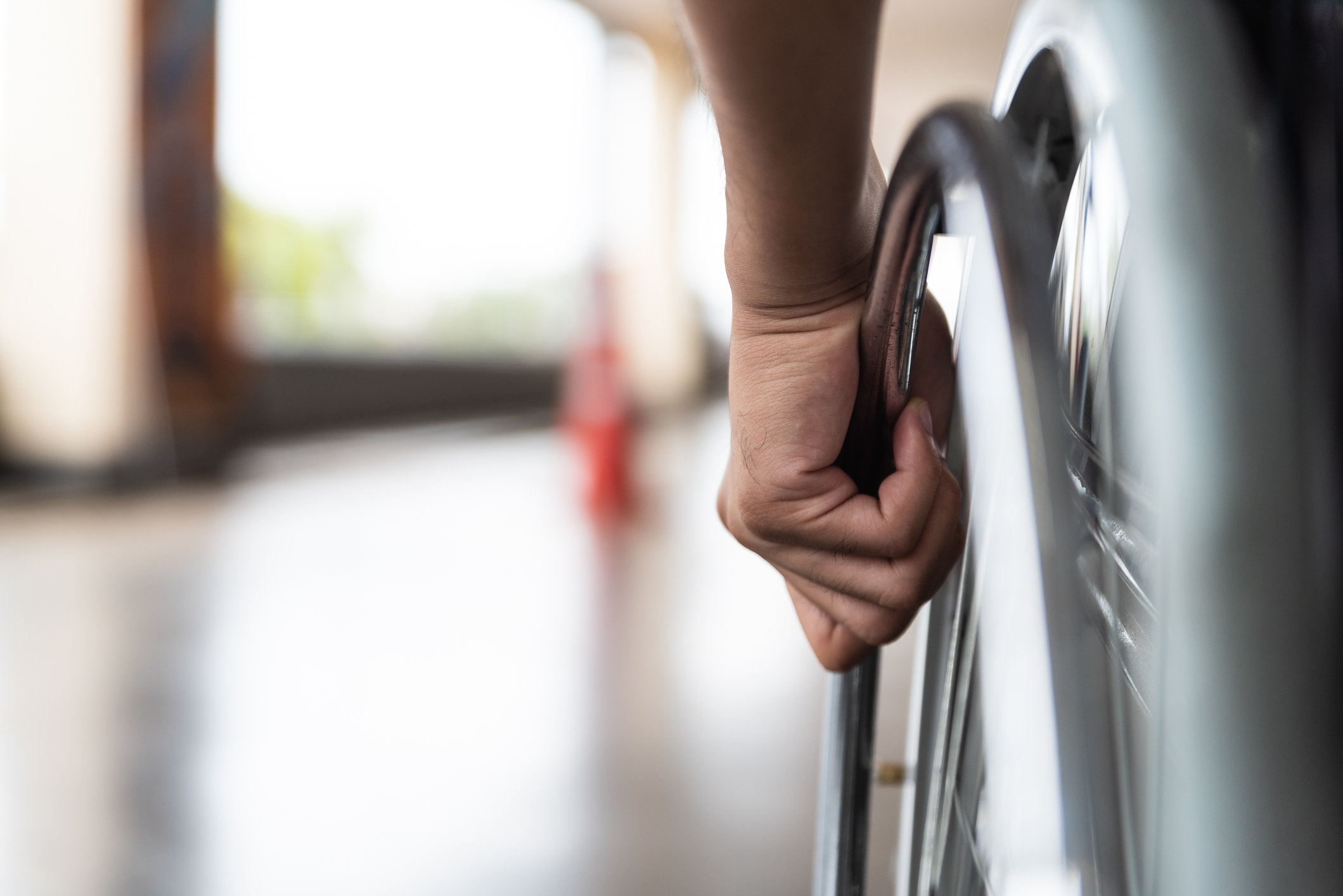What is ALS?
What is ALS?
According to the ALS Association, amyotrophic lateral sclerosis (ALS) is a disease in which motor neurons progressively degenerate. Motor neurons span from the brain to the spinal cord to all the muscles in the body. The disease is progressive, so as neurons waste away, muscles weaken and symptoms worsen. ALS ultimately causes motor neurons to die, leading to an inability to control voluntary muscle movement throughout the body. This results in the loss of everyday abilities, such as walking and speaking.
Types of ALS
There are two types of ALS, sporadic and familial. Sporadic ALS is random, meaning the diagnosed patient has no family history of the disease. Furthermore, there is a low risk of developing the disease for family members of the patient. The ALS Association claims that sporadic ALS accounts for 90% or more of ALS cases. On the other hand, familial ALS is inherited – a parent passed along a mutated gene to its children. The National Institute of Neurological Disorders and Stroke reports that mutations in over a dozen genes have been found to cause familial ALS. This type of ALS has a much higher inheritance rate, with a 50% chance that the mutation will be passed down.
Symptoms and Progression
The onset of ALS usually presents itself in one of two ways. Some first have difficulty with simple tasks using the arms or legs. This is called limb onset. Others first have a problem with speech or swallowing, which is called bulbar onset. After this onset, other symptoms emerge and worsen, including:
- Difficulty walking, such as tripping or falling
- Difficulty with Activities of Daily Living (ADLs)
- Weakness in limbs and extremities
- Slurred speech
- Difficulty swallowing
- Muscle cramps
- Twitching in arms, legs, shoulders, and tongue (also known as “fasciculations”)
- Uncontrollable periods of laughing or crying
The progression of the disease varies from person to person. According to the ALS Association, the mean survival time after diagnosis is 3-5 years, but some can live up to 10 years after diagnosis. As the disease progresses, symptoms worsen and complications can occur, such as:
Weight Loss/Malnourished: Those with ALS burn calories at a faster rate. Coupled with difficulty chewing or swallowing, this can lead to rapid weight loss or undernourishment.
Depression and/or Anxiety: Those with ALS often maintain their mental and cognitive abilities, such as reasoning, remembering, and understanding. However, the retention of these abilities allows for people with ALS to become fully aware of their condition, which can lead to depression and anxiety.
Respiratory Problems: A consequence of ALS is losing the ability to breathe. Therefore, those with ALS eventually have to depend on a ventilator to breathe. Additionally, the most common cause of death for those with ALS is respiratory failure.
ALS Diagnosis
There is no one test to diagnose someone with ALS. As a result, doctors rely on a series of tests and processes to comprehensively show evidence of the disease. Some of these procedures include:
- Electromyography (EMG)
- Nerve conduction study (NCS)
- Blood and urine studies
- Spinal tap
- Magnetic resonance imaging (MRI)
- Muscle or nerve biopsy
- In-depth neurological examination
A variety of other disease have ALS-like symptoms, so the ALS Association recommends that those diagnosed get a second opinion from an ALS specialist.
ALS Treatment
While there is no cure for ALS, treatment options are available to make living with the disease easier. There are several treatments used:
Medication: Some medications may be prescribed to those with ALS. Medications such as Rilutek and Radicava may be used in an effort to slow the progression of the disease. Other medications may be prescribed to combat spasticity, pain, and swallowing problems.

Physical Therapy: Exercises may be done to strengthen unaffected muscles, giving patients more independence and safety. Stretching and other exercises aid in reducing muscle spasm pain. Certain equipment that aids in walking or other ADLs can be provided by a physical therapist. Additionally, exercise is healthy for patients’ mental and emotional well-being.
Speech Therapy: Those with ALS eventually lose their ability to speak. However, speech therapy offers techniques that people can use to increase their speech’s clarity and volume. Additionally, speech therapy allows those with ALS to explore other methods of communication, such as computer-based synthesizers or alphabet boards.
Nutritional Aid: A nutritionist or doctor may suggest certain meal plans or diet choices in order to prevent weight loss and improve overall health and strength. These food choices are also influenced by the patient’s ability to chew and swallow. Some people with ALS eventually require a feeding tube.
Breathing Supports: Since ALS leads to breathing problems, patients eventually require support to maintain their breath. Noninvasive ventilation (NIV) is a common treatment in which a mask is used to provide oxygen through the nose or mouth.
Occupational Therapy: Occupational therapists provide options for making daily life easier. They assist in modifying the home by installing equipment that makes performing ADLs less arduous for the patient.
Post-Diagnosis
Learning that you have ALS alters your life, but there are some steps you can take after diagnosis to make your symptoms less burdensome. Educating yourself about the disease is essential. Having knowledge about ALSyou to prepare for the time ahead. The ALS Association’s website provides a number of resources about the disease. Another way to learn about the disease is to read some personal accounts of those who have ALS or care for someone with ALS. Also necessary, begin planning out the following years. Find your support system, including family, friends, professional counseling, and support groups.
ALS Care
Planning care for your loved one can be difficult, but OSH is here to help. We offer personal care, which is a great option during the earlier periods of ALS. Personal Care services include assistance with ADLs, bathing, dressing, and meal preparation. When further care becomes required, skilled nursing may better fit the patient’s needs. Skilled nursing care includes help with feeding tubes, medication management, and monitoring vitals. Occupational, physical, and speech therapy is also available depending on location. Learn more about these options and find a location near you.
